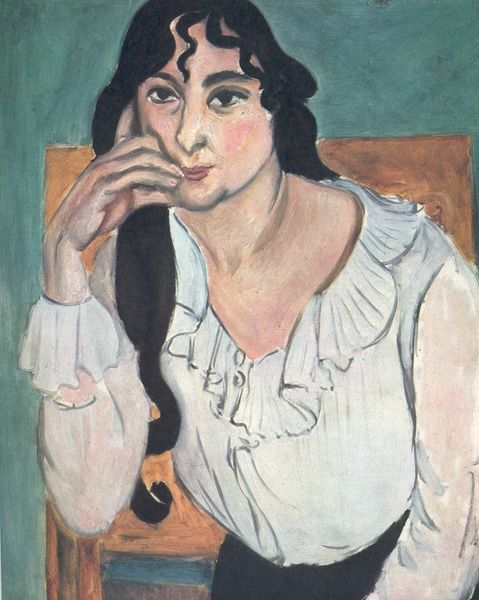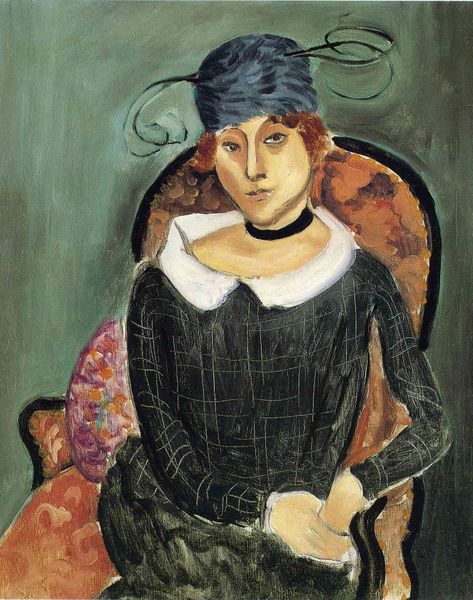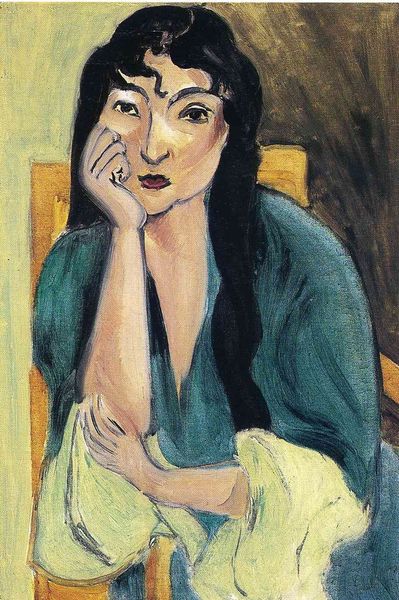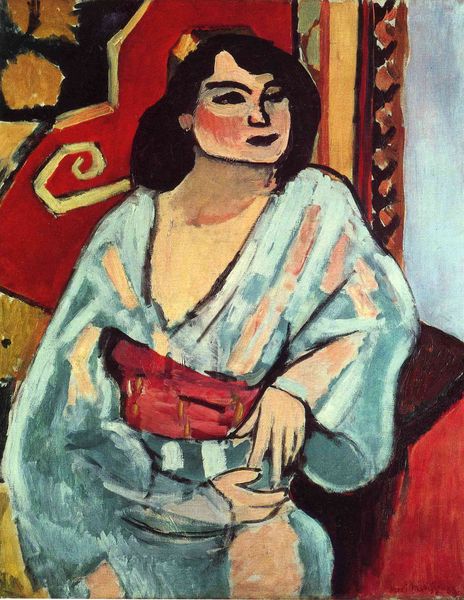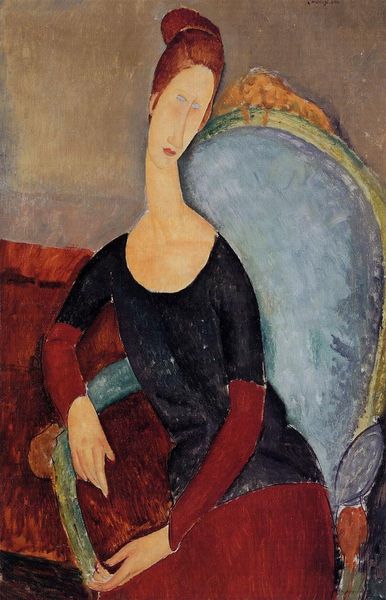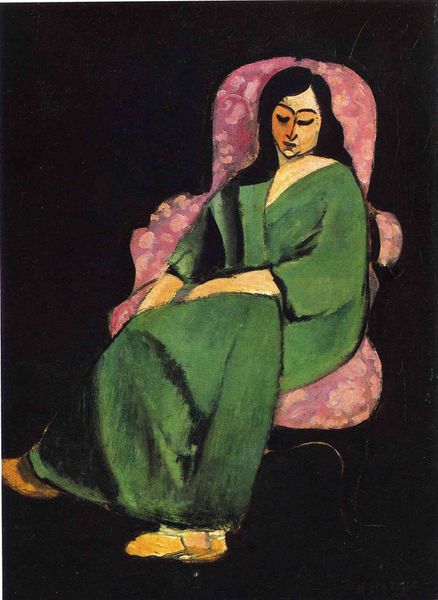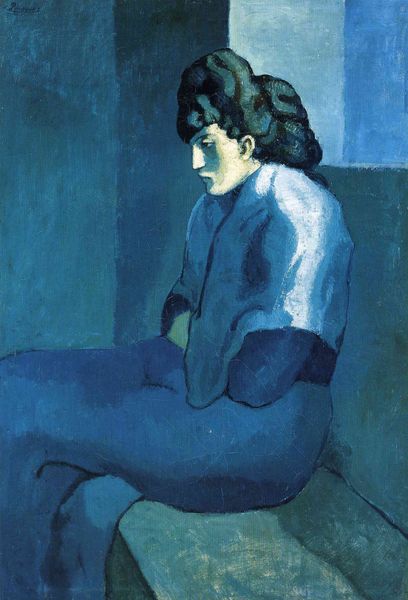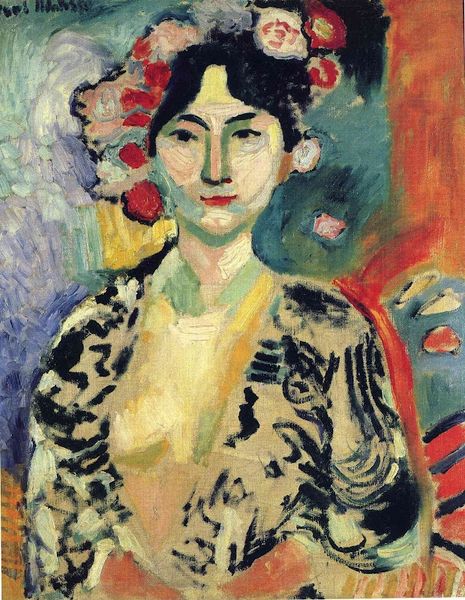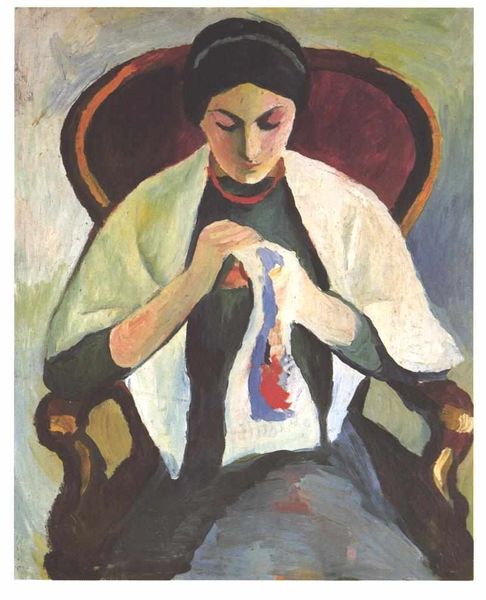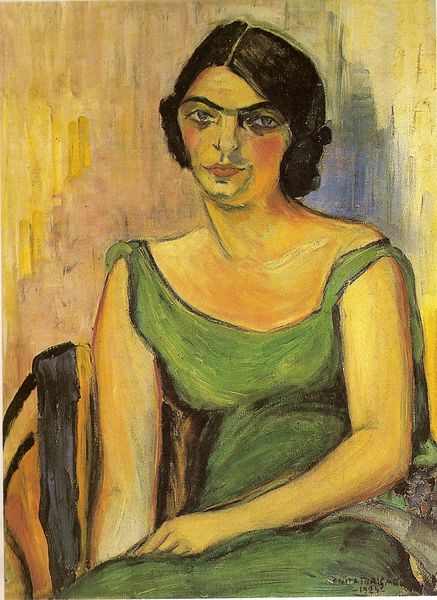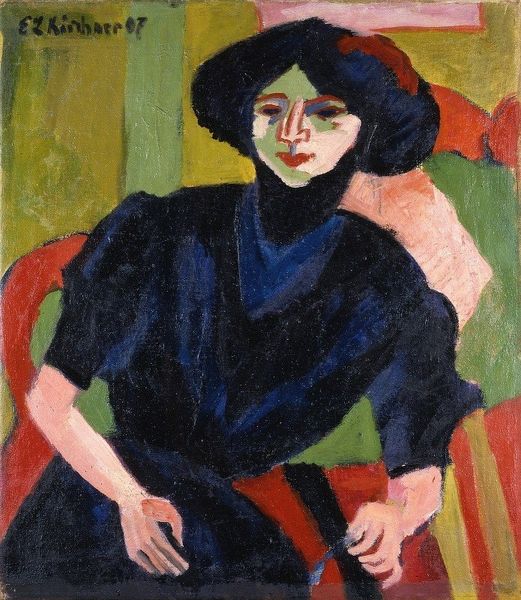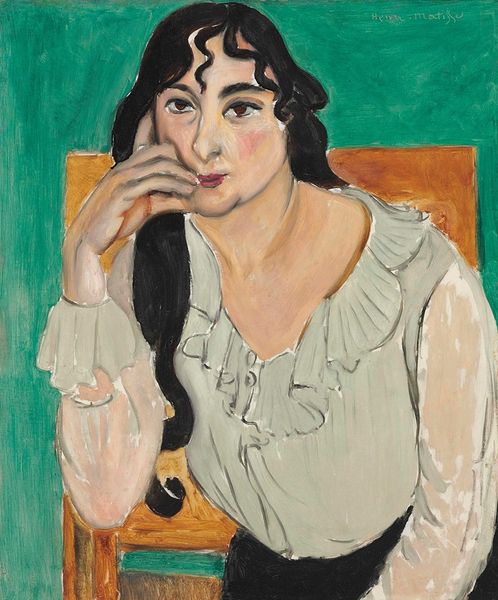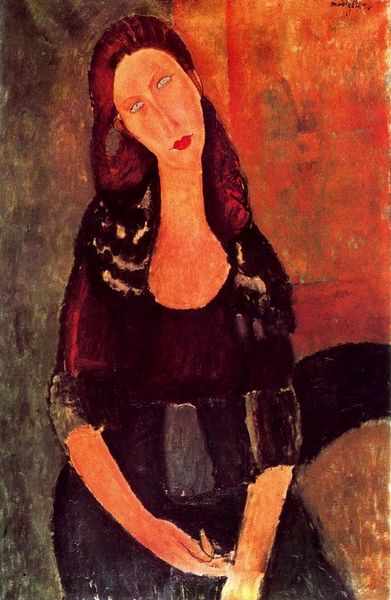
painting, oil-paint
#
portrait
#
painting
#
oil-paint
#
intimism
#
modernism
Copyright: Public domain US
Editor: This is Henri Matisse's "Laurette in Green in a Pink Chair," painted in 1917 with oil on canvas. I find the woman's gaze quite direct, almost confrontational, especially considering the intimate domestic setting. What historical perspectives might illuminate this portrait? Curator: A key aspect is understanding the moment of its creation. 1917 was a pivotal year, the height of World War I. How do you think the prevailing atmosphere might have influenced Matisse’s approach to portraiture here, diverging from earlier more decorative modes? Editor: Perhaps the intensity is a reflection of the unease of the time? Before, Matisse focused more on vivid colors, patterns, pure joy; now there seems to be some weight added on to that? Curator: Exactly. Matisse’s paintings during the war moved away from overt displays of luxury or leisure. The presence of that fan is striking, hinting at social norms disrupted. Note that while domestic scenes of women are part of artistic traditions, Matisse pushes the sitter, Laurette, beyond the passive decorative. What happens if we see her not as solely an object of contemplation, but also an active participant in, and even observer of, society? Editor: That reframes the whole thing, that we look at what this meant about women and their role as society kept evolving around them! Do you think museums exhibiting more pieces with female gazes, for example, would add even more to that conversation? Curator: Definitely. Contextualization plays a critical role in shaping meaning, something that the artist never truly gets the final say on. The politics of display really shape how we understand the social role of such imagery. Editor: This conversation changed how I perceived it! Thank you. Curator: It was my pleasure; thank you for this illuminating discussion.
Comments
No comments
Be the first to comment and join the conversation on the ultimate creative platform.
